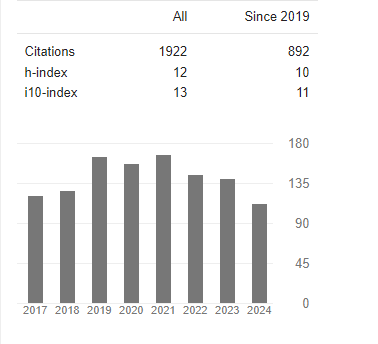Varriation in Utilization of Modern Contraceptive Among Married Women in the Seven Woredas of Assosa Zone: A Comparison of Bayesian and Classical Approach. Case Study in Assosa Zone, Benishangul Gumuz, Ethiopia
Abstract
Eshetu Mebrate Mengesha, Mekdes Derbie
Introduction: Contraception is a procedure that can be used to avoid pregnancy or childbirth. When women choose to prevent pregnancy or have a longer birth, they frequently use contraceptives. The global prevalence rate of contraceptive use was 64 percent, with Africa responsible for 33 percent. Ethiopia has an estimated rate of 39.2 percent of its population engaging in this activity.
Objectives: This study was aimed to identify the predictors of married women’s contraceptive practice using Bayesian and classical approach. In addition, this study has identified the within and between Woredas variation using the hierarchical nature of the data obtained in different woredas. For identifying the better model, researcher has compared the Bayesian and classical multilevel logistic regression models.
Methods: This research was conducted in seven Woredas of Assosa zone and was based on a cross-sectional study that primarily focused on married women between the ages of 15 and 49 and the factors that influenced their contraceptive use. Two stage model comparisons were used to approximate the parameters, with the first stage having a null, random intercept, and random slope with a Bayesian approach.
Result and Conclusion: The overall contraceptive prevalence rate among 6866 married women 3121(45.46%). According to the intra Woreda correlation of the appropriate model, the between Woreda variance in married women's contraceptive practice was 15.71%, with the remaining 84.29 percent variation attributed to differences in contraceptive practice between women. Finally, predictors for married women contraceptive practice such as women's age, place of residence, women's educational level, husband's educational level, women's job, husband's occupation, wealth index, religion, and knowledge of family planning. The Bayesian multilevel model was found to be the most suitable model for fitting the data after a comparison of classical and Bayesian multilevel models.



